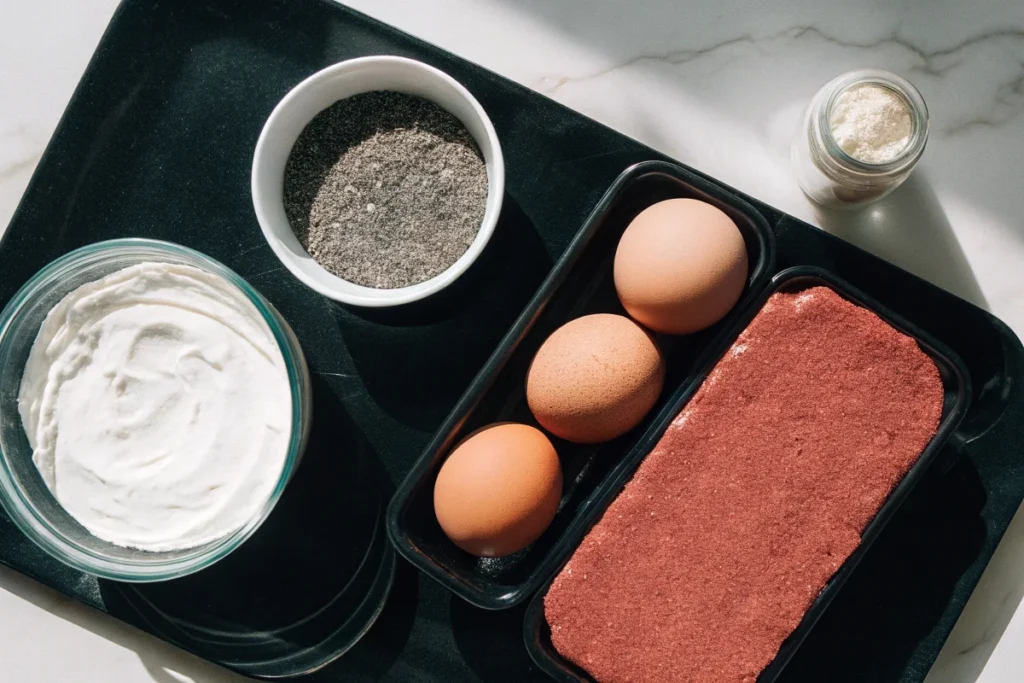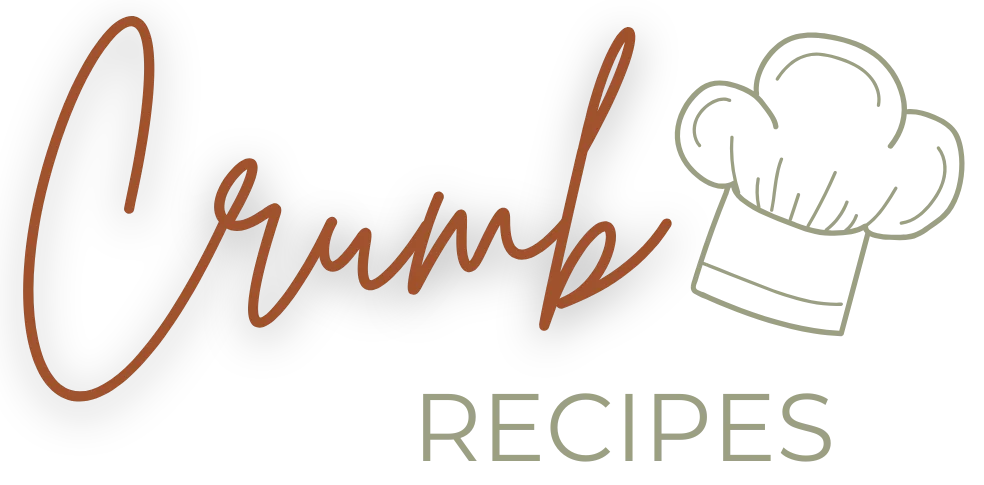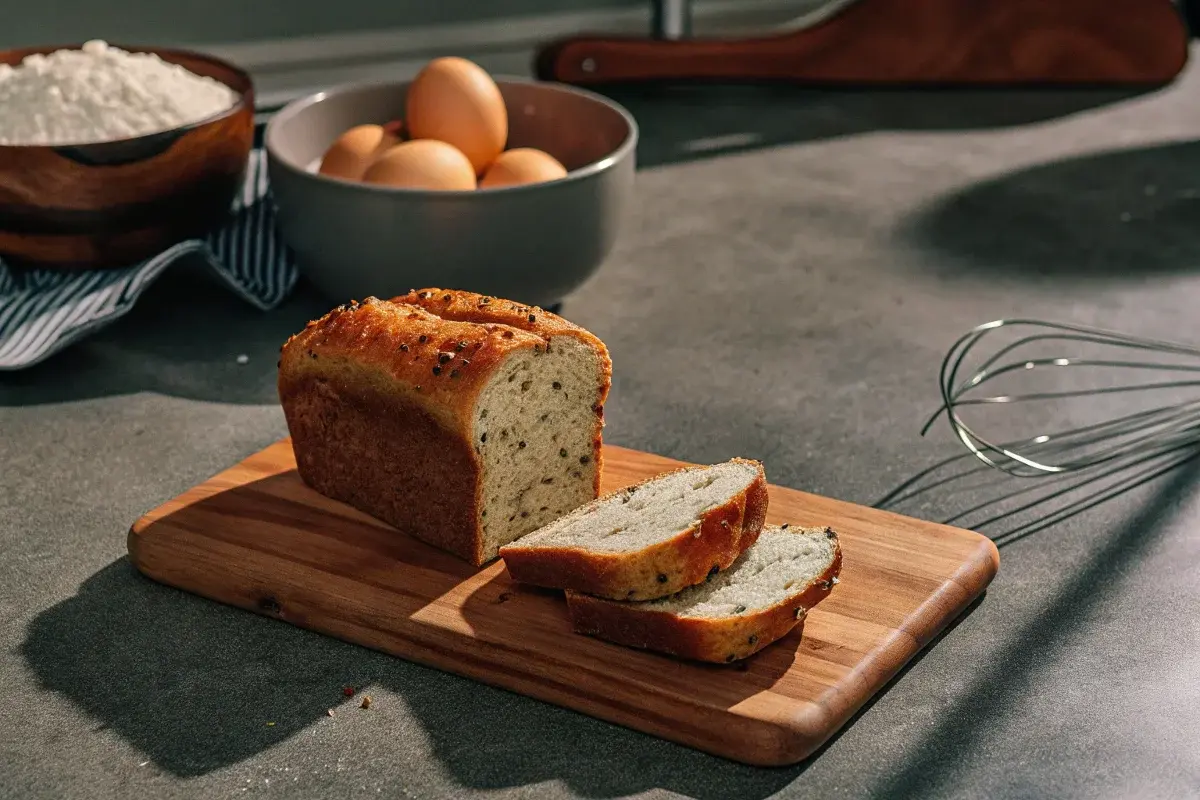Bread is a staple food in countless cuisines. However, many health-conscious individuals worry about its carbohydrate content and limited protein. If you share these concerns, you’re not alone. High protein bread offers a nutritionally dense alternative to classic white loaves, and it can be a game-changer for athletes, dieters, or anyone aiming to boost protein intake without sacrificing taste. In this comprehensive guide, you’ll discover why bread high in protein matters, how to select the right ingredients, and ways to bake your own at home.
In this article, you’ll find:
- A detailed look at hight protein bread and its nutritional benefits.
- Key ingredients, recipes, and tips to help you create (or purchase) the best hight protein bread possible.
- Common mistakes to avoid so your bread turns out perfect every time.
- Frequently asked questions on the topic, offering straightforward, valuable answers.
Let’s dive in and explore everything you need to know about high protein bread.
Why High Protein Bread Matters
Protein is essential for building muscle, repairing tissue, and supporting metabolic functions. Therefore, many people add more protein to their meals to promote weight management and support overall health. High protein bread is one of the most convenient ways to do this. After all, you likely already enjoy sandwiches or toast daily.
Key reasons to choose bread high in protein:
- Muscle Support: An adequate protein intake contributes to muscle repair and growth.
- Fullness Factor: Protein can help you feel fuller for longer, which might aid in weight management.
- Blood Sugar Control: Balancing carbohydrates with protein often results in steadier blood sugar levels.
- Nutrient Variety: Many protein-rich loaves contain seeds, nuts, and other nutrient-dense ingredients.
However, not all high protein bread is created equal. Some brands rely on additives or low-quality proteins. Others include minimal whole grains. To make the best choice, it’s vital to check ingredient labels and nutrition facts. Moreover, understanding the balance between protein, fiber, and healthy fats can significantly enhance the overall health impact of your daily bread.
The Rise of Protein-Enriched Foods
Food manufacturers have noticed the growing demand for protein-rich products. You can now find snacks, cereals, and even pasta with extra protein. Bread is no exception. However, the quality of protein sources in these products varies. For instance, soy, whey, and pea protein are popular. Yet, they don’t all offer the same amino acid profile or digestibility.
By staying informed about which ingredients best suit your dietary needs, you can make smarter decisions. Ultimately, the goal is to balance taste, texture, and nutritional value. A loaf that is too dense or dry isn’t appealing. Thus, the ideal high protein bread should offer a satisfying texture without compromising on flavor.
The Nutritional Breakdown of High Protein Bread
High protein bread often contains an above-average percentage of protein compared to traditional bread. But what does that look like in actual numbers? Typically, a standard slice of white bread might have around 2–3 grams of protein. Meanwhile, a slice of protein-packed bread can range from 5–10 grams. This jump significantly contributes to your daily protein goal.
Macros in a Slice
When examining any bread high in protein, check the macronutrient breakdown:
- Protein: Look for at least 5 grams per slice. Some options may go as high as 10 grams.
- Carbohydrates: Total carbs vary, so opt for a balanced ratio. A target might be around 10–15 grams of net carbs per slice if you’re watching carb intake.
- Fat: Seeds, nuts, and other enrichments can add healthy fats. Ideally, you want unsaturated fats rather than saturated.
Impact on Overall Diet
Including high protein bread in your eating plan can simplify meal prep. For instance, if you’re aiming for 100 grams of protein per day, substituting two slices of standard bread with two slices of protein-rich bread could add an extra 10–12 grams. Therefore, it supports your dietary goals without forcing you to consume large amounts of meat or protein shakes.
However, beware of excessive sodium or hidden sugars. Many commercial breads contain more salt or sweeteners to improve taste. Always scan the label for hidden additives that could undermine the bread’s health benefits.
Things to check on labels:
- Protein per slice
- Source of protein (e.g., wheat gluten, pea protein, soy protein)
- Fiber content
- Sodium levels
- Added sugars
Remember, balance is key. A slice or two of hight protein bread a day may benefit your nutritional profile. Yet, pairing it with a broader selection of nutritious foods ensures you meet essential vitamin and mineral requirements as well.

Ingredients That Power Protein-Rich Bread
The secret to creating a loaf rich in protein lies in its ingredients. Many commercial breads still rely on refined flour, which lacks essential nutrients. In contrast, protein-packed bread typically incorporates nutrient-dense flours, seeds, and legumes. Below are some of the most common additions that elevate a simple dough into a high protein masterpiece.
Wheat vs. Alternative Flours
- Whole Wheat Flour: While higher in protein than refined flour, it might not be enough on its own.
- Spelt Flour: An ancient grain that brings a slightly nutty flavor. It has more protein than conventional wheat flour.
- Almond Flour: Dense in nutrients and healthy fats. However, it can result in a heavier texture.
- Oat Flour: Adds soluble fiber and can help stabilize blood sugar.
- Chickpea Flour: Known for its high protein content and gluten-free properties.
Combining flours can lead to a balanced flavor profile and improved texture. Many bakers include at least one higher-protein flour like chickpea or almond flour to increase protein without destroying the dough’s structure.
Additional Protein Sources
To push the protein content higher, bread recipes often include:
- Egg Whites or Liquid Egg Substitutes: These introduce protein without adding too much fat.
- Seeds (Chia, Flax, Sunflower, Pumpkin): Seeds pack protein, fiber, and healthy fats.
- Greek Yogurt or Skyr: Thick, tangy dairy products that increase moisture and protein simultaneously.
- Protein Powders (Whey, Soy, Pea, or Hemp): A convenient way to spike the protein level in any bread recipe.
Moreover, some bakers incorporate cottage cheese or quark for both moisture and protein. Ultimately, the combination of flours and add-ins dictates not only the loaf’s protein content but also its texture and flavor.
Common Varieties of High Protein Bread on the Market
Before you commit to baking your own bread, you might want to try commercially available options. Fortunately, a variety of brands offer loaves labeled as “high protein.” However, it’s important to read the fine print.
- Whole-Grain Power Bread: Often includes a base of whole wheat, plus seeds and legumes.
- Sprouted Grain Bread: Uses sprouted wheat or other grains, which can enhance nutrient absorption.
- Low-Carb Protein Bread: Focused on minimal carbs while maintaining a higher protein ratio.
- Seeded Protein Loaves: Packed with sunflower, pumpkin, flax, or sesame seeds for both texture and protein.
Look for “100% whole grain” on the label or a clear mention of which flour is used as the main ingredient. If the packaging boasts “multi-grain,” it may not always guarantee high protein content. Moreover, watch out for marketing terms like “protein infused” or “enriched,” which sometimes mask poor protein quality or low concentrations.
The Top Commercial Brands of High Protein Bread
When searching grocery store shelves, you’ll likely see several popular labels. Although availability can vary by region, the following brands often rank high for their protein content, taste, and overall ingredient quality.
Dave’s Killer Bread
Dave’s Killer Bread is well-known for using organic whole grains and seeds. Many of its varieties offer a robust profile of protein and fiber. However, you need to compare each type to identify which one provides the highest protein per slice. Typically, the brand’s “Powerseed” or “21 Whole Grains and Seeds” lines rate among the best if you want a protein-packed option.
Ezekiel Bread
Ezekiel Bread comes from sprouted whole grains and legumes like lentils, spelt, and millet. These sprouted ingredients often give it a higher protein content compared to standard white bread. Beyond its protein advantage, Ezekiel Bread typically contains no added sugars or preservatives. This makes it a popular choice among clean-eating enthusiasts who still crave toast or sandwiches.
Other Leading Brands
- Silver Hills: Known for sprouted grain breads with moderate protein.
- Alvarado Street Bakery: Offers organic sprouted wheat bread with a decent protein-to-carb ratio.
- Biona: Popular in Europe, Biona produces seeded loaves that can be protein-rich.
Of course, always read nutritional labels to ensure the chosen product aligns with your dietary goals. One brand’s “high protein bread” may not match another’s offering in terms of actual macronutrients.

Baking Your Own High Protein Bread at Home
If commercial options don’t meet your expectations or taste preferences, consider baking your own protein-rich bread. You get full control over ingredients, nutritional quality, and flavor. Though it may take practice to perfect, the rewards are substantial.
Essential Equipment
- Stand Mixer or Hand Mixer: Kneading high protein dough can be tough by hand, especially with heavy flours or seeds.
- Mixing Bowls: Various sizes to accommodate dough expansion and ingredient preparation.
- Loaf Pan or Baking Sheet: Nonstick options can simplify cleanup.
- Kitchen Scale: Ideal for precise measurements, especially when using multiple flour types.
Step-by-Step Instructions
- Gather Ingredients: Choose high-protein flours like chickpea, spelt, or whole wheat. Include seeds, eggs, or protein powders.
- Proof Your Yeast: Dissolve active dry yeast in lukewarm water. Add a small pinch of sugar if desired. Wait until it foams.
- Combine Dry Ingredients: In your mixing bowl, combine flours, seeds, salt, and any protein powder.
- Add Wet Ingredients: Mix in yeast solution and liquids like milk, egg whites, or yogurt.
- Knead Thoroughly: Use a stand mixer with a dough hook on low speed until the dough feels elastic.
- First Rise: Cover the dough and place it in a warm spot for about an hour, or until it doubles in size.
- Shape and Second Rise: Punch down the dough, shape it, and let it rise again in the loaf pan.
- Bake: Preheat your oven to about 375°F (190°C). Bake for 30–40 minutes or until the crust is golden and a hollow sound is heard when tapping the bottom.
For additional flavor, add fresh herbs, garlic powder, or grated cheese. You can also drizzle some extra virgin olive oil over the loaf before baking to enhance the crust.
Pro Tips:
- If you use chickpea flour, consider blending it with wheat flour to maintain a workable texture.
- Avoid overloading the dough with heavy seeds, which can weigh it down.
- Monitor moisture levels. High protein flours often require more liquid to avoid a dry loaf.
Common Mistakes to Avoid When Making Protein-Packed Bread
Even seasoned bakers can run into issues. Although high protein bread is delicious, you might need to troubleshoot a few problems to get the perfect loaf.
Overloading Flour
Many people add too many protein-rich flours (such as almond or chickpea) without adjusting liquids or gluten content. This can result in a dense, heavy loaf. Rather than a 100% almond flour base, start with a blend that includes whole wheat or bread flour to help with structure.
Ignoring Rest Time
High protein dough often needs extra time to hydrate fully. Skimping on rest can lead to a tough, dry texture. Therefore, keep an eye on your dough’s consistency, and don’t rush the fermentation stages.
Other pitfalls:
- Using Old Yeast: You want active yeast to ensure a good rise.
- Excess Salt: Salt is necessary for flavor but can inhibit yeast growth if used in large amounts.
- Over-Kneading: While thorough kneading is vital, too much can create a chewy texture.
Paying attention to these factors can spare you disappointment. Indeed, baking bread high in protein takes practice, but once you nail the technique, you’ll enjoy endless, nutrient-rich loaves.
Pairing Suggestions for Protein-Packed Meals
High protein bread can serve as a versatile base for breakfast, lunch, or dinner. For example, you can create balanced meals without resorting to complex recipes. Below are some pairing ideas to inspire you.
- Avocado and Egg Toast: Mash avocado with a pinch of salt, then top with a soft-boiled egg or scrambled egg whites.
- Turkey and Spinach Sandwich: Add low-fat cheese for extra protein and pair it with fresh spinach and tomato slices.
- Tuna Salad on Protein Bread: Mix canned tuna with Greek yogurt, celery, and diced onions for a lighter version of classic tuna salad.
- Peanut Butter and Banana: Ideal for a quick breakfast or post-workout snack. Use natural peanut butter to keep sugar low.
- Grilled Chicken Open-Face: Layer grilled chicken breast, lettuce, tomatoes, and a drizzle of olive oil or balsamic glaze.
Moreover, you can cut leftover slices into croutons for salads or add them to soup for a protein boost. Feel free to experiment with different spreads, condiments, and fillings. The possibilities are endless.
FAQ about High Protein Bread
Below are some of the most common inquiries people have. These answers will help you better understand what to look for and how to maximize the benefits of bread high in protein.
What type of bread is highest in protein?
Typically, bread made with sprouted grains, seeds, and legumes has higher protein levels. You’ll find products labeled “protein bread” or “power bread” that pack 5–10 grams of protein per slice. Sprouted grain breads often lead the pack, as sprouting can increase bioavailability of amino acids.
Which Dave’s Killer bread has the most protein?
Dave’s Killer Bread offers several loaves, and their “Powerseed” variety is often cited as the highest in protein among the brand’s lineup. However, always read the nutrition facts label, because other Dave’s Killer Bread products may also have a competitive protein-to-carb ratio.
Which Ezekiel bread has the highest protein?
Ezekiel 4:9 Original is usually the most popular choice, boasting a combination of sprouted grains and legumes like lentils. This particular variety tends to have around 4–6 grams of protein per slice, though you may find other Ezekiel options with similar amounts.
Are protein breads healthy?
Protein breads can be healthy when made with whole grains, minimal additives, and a balanced macronutrient profile. They often aid in satiety, support muscle maintenance, and offer more vitamins and minerals than standard white bread. However, always check for hidden sugars, excessive sodium, or low-quality protein sources.
Conclusion
High protein bread can revolutionize your daily meals. It offers a delicious, convenient way to boost your protein intake without drastically changing your routine. Whether you opt for commercial brands like Dave’s Killer Bread and Ezekiel Bread or you bake your own at home, you’ll find plenty of options to meet your nutritional goals. Indeed, the key is to look for quality ingredients, a balanced macronutrient profile, and a flavor you genuinely enjoy.
Experiment with different recipes to discover what works for you. Once you master the art of creating or selecting the perfect protein bread, you’ll never look back. In addition, pairing your bread with nutritious toppings or fillings can transform an ordinary sandwich into a protein-packed feast. Enjoy your journey toward a healthier, more satisfying slice of bread.

